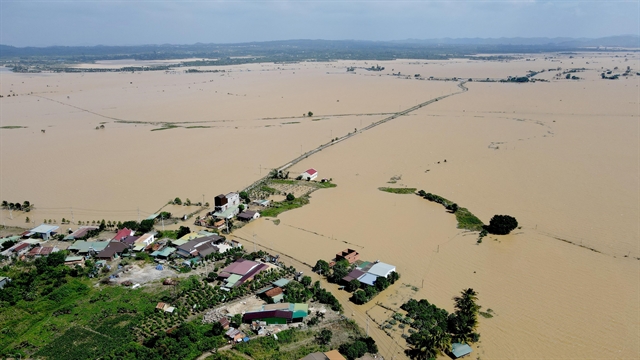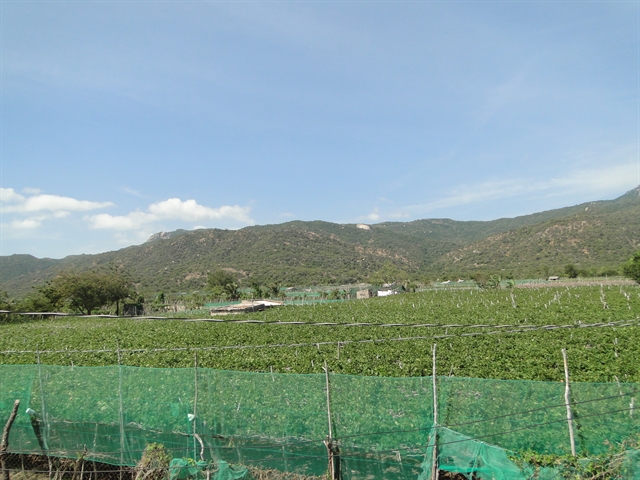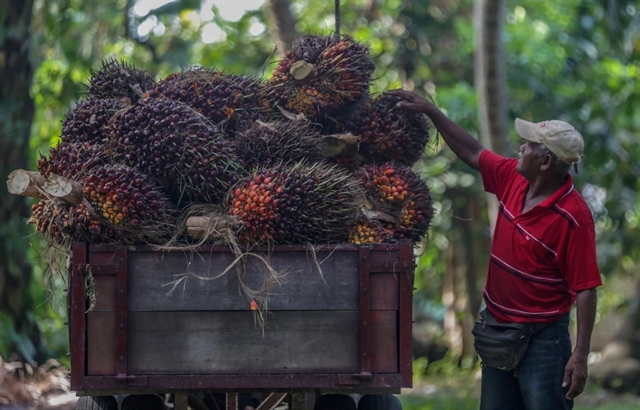 Society
Society

Grape planters in the south-central province of Ninh Thuận in the past had to dig wells during the dry season to get irrigation water, at a cost of VNĐ50 million (US$2,100) per hectare.

|
| Drip irrigation has been piloted in Thái An Hamlet, Vĩnh Hải Commune in Ninh Thuận Province. Photo courtesy of Green Growth Facility Strategy Project |
HÀ NỘI — Grape planters in the south-central province of Ninh Thuận in the past had to dig wells during the dry season to get irrigation water, at a cost of VNĐ50 million (US$2,100) per hectare.
But the solution was unstable as the groundwater would often run out and was saline.
However, with the support of the Belgian Development Agency under the Green Growth Strategy Facility, a drip irrigation system was installed in 2013 in Vĩnh Hải Commune in Ninh Hải District to help local grape farmers access stable water sources from local reservoirs.
Farmers now no longer worry about water shortages and saline intrusion during the dry season and do not have to spend much on digging wells. They have also saved water as well as costs.
Nguyễn Văn Chinh, a farmer in Vĩnh Hải Commune, said: “I can save power first and then I can save money. I have saved 60 per cent of water so far.”
Ninh Thuận Province and five provinces - Bình Thuận, Hà Tĩnh, Phú Yên, Khánh Hòa and Bình Định – have received assistance from the Belgian agency, as a result of co-operation from mid-2013 to 2019 with the Vietnamese Ministry of Planning and Investment.
The aim is to strengthen capacity for green growth at national and provincial levels.
The project received five million euros from a Belgian grant and half a million euros from the Vietnamese Government.
An initiative on solar power for public lighting systems has also been successfully applied in four communes in Hàm Thuận Bắc District.
Previously, accidents had been regularly reported on dark communal roads.
However, Lê Thị Trinh, a local in Hàm Chính Commune, said since the solar lighting system was installed, many changes have been made to the rural area. As the roads have become brighter, security has been ensured and accidents no longer occur.
The renewable energy system reduces pressure on the national grid, especially in the context of weak local power transmission. It also helps reduce fossil fuel consumption and greenhouse gas emissions.
Commenting on the green-growth facility strategy’s outcomes after five years, Dr Phạm Hoàng Mai, head of Department of Science, Education, Natural Resources and Environment under the Ministry of Planning and Investment, said the project produced positive results that offer lessons on implementation of the national green-growth strategy.
Green-growth action plans at local levels have been mapped out by authorities of these provinces. These plans serve as guidelines to the localities to attract green-growth investment from domestic and foreign investors.
Việt Nam’s green-growth strategy, launched in 2012, relies on three pillars: reducing greenhouse gas emissions through development of renewable energy sources; promoting cleaner production strategies for its industry, manufacturers and agriculture; and encouraging greener lifestyles and sustainable consumption.
Dr Mai said that 30 localities and 70 ministries and sectors nationwide have launched green-growth action plans for their provinces and agencies.
Many green-growth models like the ones supported by the Belgian Development Agency have been developed, showing the efforts of both the Government and donors in fostering a green-growth strategy, he said. — VNS




